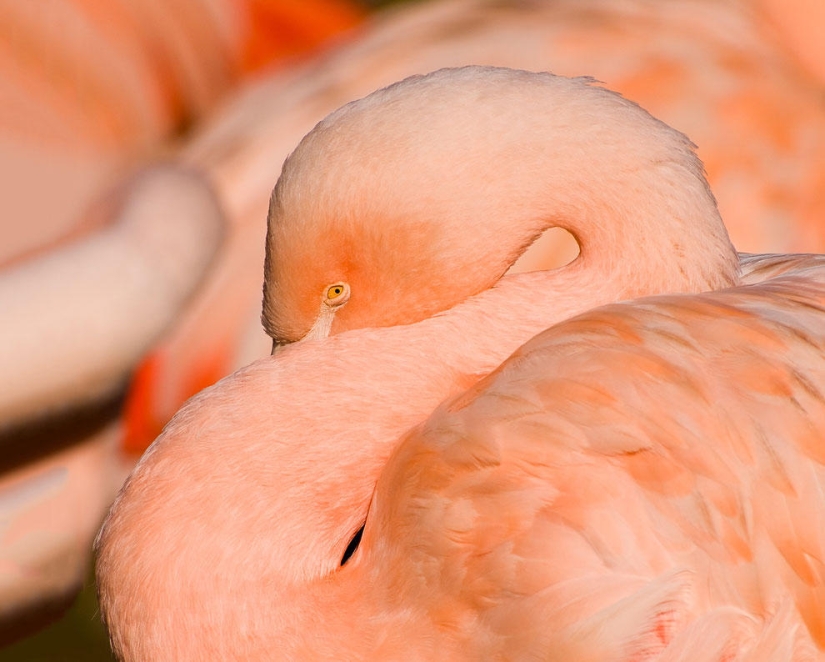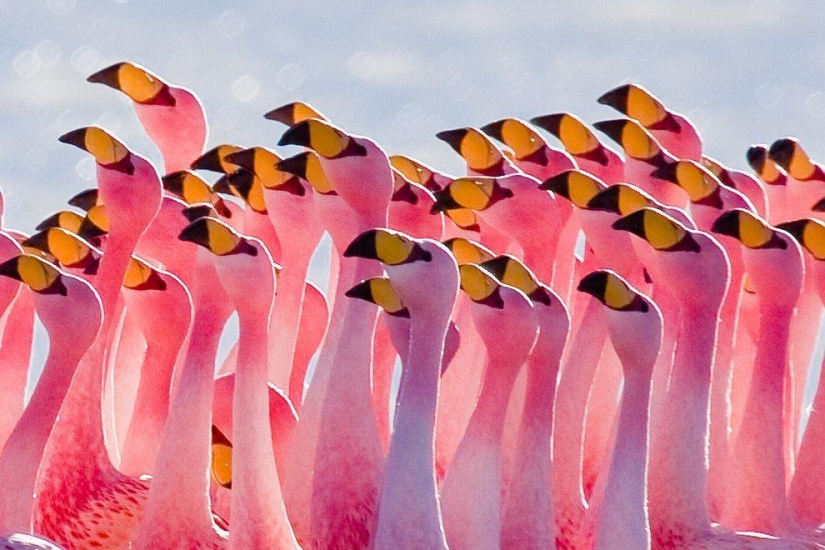Nakuru in Kenya is a country of pink flamingos
Nakuru in Kenya is the lake of a million pink flamingos, without exaggeration. Hundreds of thousands of birds flock here, creating a real spectacle for tourists. If you have never seen photos of hundreds of thousands of pink flamingos nesting on the shores of the lake, then this report is for you. At the same time, we will find out why these birds stand on one leg.


The name of the lake "Nakuru" in the Maasai language means "dusty place", although in fact this lake is quite swampy, shallow and salty.

But sometimes this lake is covered with a real pink blanket of hundreds of thousands of birds. Flamingos can be recruited up to 1.5 million here, they are located in a bright pink carpet along the shores of the lake.


There are more flamingos here than anywhere else on Earth, millions of individuals. Landing and taking off near the coastline, myriads of creatures form an ever-changing pattern of various shades of pink.

Flamingos are sometimes called "firebird" because some of them have really bright plumage. Sometimes flamingos are called the "bird of dawn" because other species have pale pink plumage.


Thousands and thousands of birds

Algae and crustaceans living in these lakes are excellent food for flamingos, which are a real pleasure to watch.

Flamingos have thin long legs, a flexible neck and plumage, the color of which varies from white to red. Their special distinguishing feature is a massive downward-curved beak, with which they filter food from water or silt.


Pink flamingos feed with their heads hanging down and moving it from side to side, so water is filtered through the beak. Their beak and the edges of the tongue are equipped with small plates that detain planktonic algae, small crustaceans, mollusks and other invertebrates.

The characteristic red or pink color of their plumage gives a special pigment from the shells of small crustaceans. With food, it enters the bird's body, and then into the plumage.


Flamingos are so unusual birds ("in their appearance, the same among birds as a camel among quadrupeds," as the Russian traveler G. S. Karelin wrote about them) that there are many legends about them.

As already mentioned, Lake Nakuru in Kenya is quite salty. In general, on salt lakes, the concentration of salt can be such that no vertebrate animal, except flamingos, can withstand it. Ch . drew attention to this unique phenomenon . Davrin. "How strange," he exclaimed, "that a living being could live in such places!"

Flamingos spend most of their time in shallow water. These birds take off hard and very reluctantly, mostly only in case of danger or going for food. They run away for a long time and, having already taken off, continue to "run through the air". Then they "remove the chassis" and stretch their legs…


"Flying flamingos in a flock are an unforgettable sight," wrote Professor N. A. Gladkov. "Against the background of the reddish-yellow coast of the sea, its blue surface and the pale blue sky, a chain of flying flamingos stretches, which, like a garland of electric bulbs, then flash red, then all turn to the observer with gray tones of plumage, as if the garland has gone out."

The natural enemies of flamingos are foxes, wolves, jackals and large feathered predators — eagles and falcons, often settling near colonies.


In case of danger, when flamingos take off, it is difficult for a predator to choose a certain victim from the pack.

Why do flamingos stand on one leg?
Flamingos, storks and other long-legged birds use standing on one leg to minimize heat loss in the wind. This loss through legs uncovered by feathers due to their unfavorable volume-to-surface ratio is quite large, so birds try to keep their legs alternately in the warmth of well-insulated plumage.


What seems to be an extremely uncomfortable and difficult position from the outside, requires absolutely no effort from the flamingo. A special physiological device prevents the bending of the supporting leg, which is why the leg remains stretched even without the use of muscular force.


The life expectancy of these beautiful birds in natural conditions is not exactly known, but in captivity they live up to quite a respectable age by bird standards — 30 years.

Despite their external fragility, flamingos have learned to adapt well to the most difficult living conditions. Maybe that's why archaeologists managed to find the remains of birds that are 30 million years old, almost identical to modern flamingos.
Recent articles

Straws are such a commonplace item that we rarely think about their origins. It seems they've always been around: in cocktails, ...

In the Victorian era Britain was quickly urbanized. By 1851 it became the first country lived in cities of more people than in the ...

Every day we face some trouble. The technique is slow, when you need something rushed, all traffic lights you come across on the ...